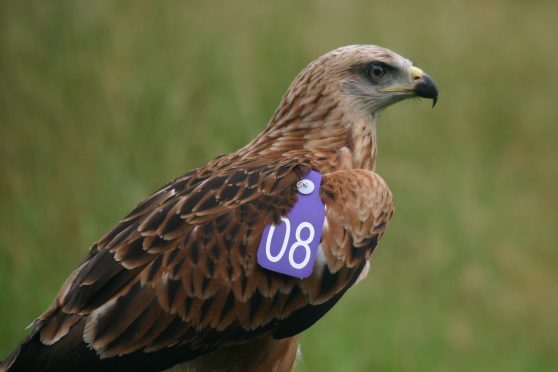For 150 years, the magnificent sight of a red kite gliding through the skies of the north-east of Scotland had been consigned to history.
But 10 years ago, the RSPB successfully reintroduced the species to the region, and the graceful birds of prey are now thriving once more across Aberdeenshire and the outer edges of Aberdeen.
The predators were released as part of a three-year project, launched in 2007, which involved 101 young birds being reintroduced at secret locations on the outskirts of Aberdeen.
Red kites were persecuted to extinction in England, Scotland and Ireland in the 19th century and, by the turn of the 20th century, just a handful of pairs clung onto life in the British Isles in a tiny corner of Wales.
However, in 1989, UK-wide re-introductions were launched and the birds are now a common site across the country.
In the north-east, the birds are now once again regularly spotted, from the Cairngorms to the Granite City and south into Angus.
Jenny Weston, a conservation officer for RSPB Scotland, was the charity’s red kite officer 10 years ago.
She said: “The return of the red kite to our skies is a massive conservation success story.
“That so many of us now see kites on our daily commutes or walks should be celebrated, as just 10 years ago they were a rare site in Aberdeen, and 30 years ago they were absent from Scotland.
“I feel privileged to have been part of this project since it began, especially as I remember watching kites as a child in Wales where they were still very rare indeed.”
Since the first successful reports of breeding in 2009, more than 300 chicks have been born in the wild across the north-east.
And now, to mark the 10-year anniversary of their return to the region, RSPB Scotland has launched a red kite photo competition.
The judges say they will be looking for photos that tell a powerful story about the iconic birds, and the winning entrant will win a day out with an RSPB conservation officer to visit local red kite hotspots, take photos and learn more about the species and its conservation.
For more information on the competition, email aberdeenredkites@rspb.org.uk.
